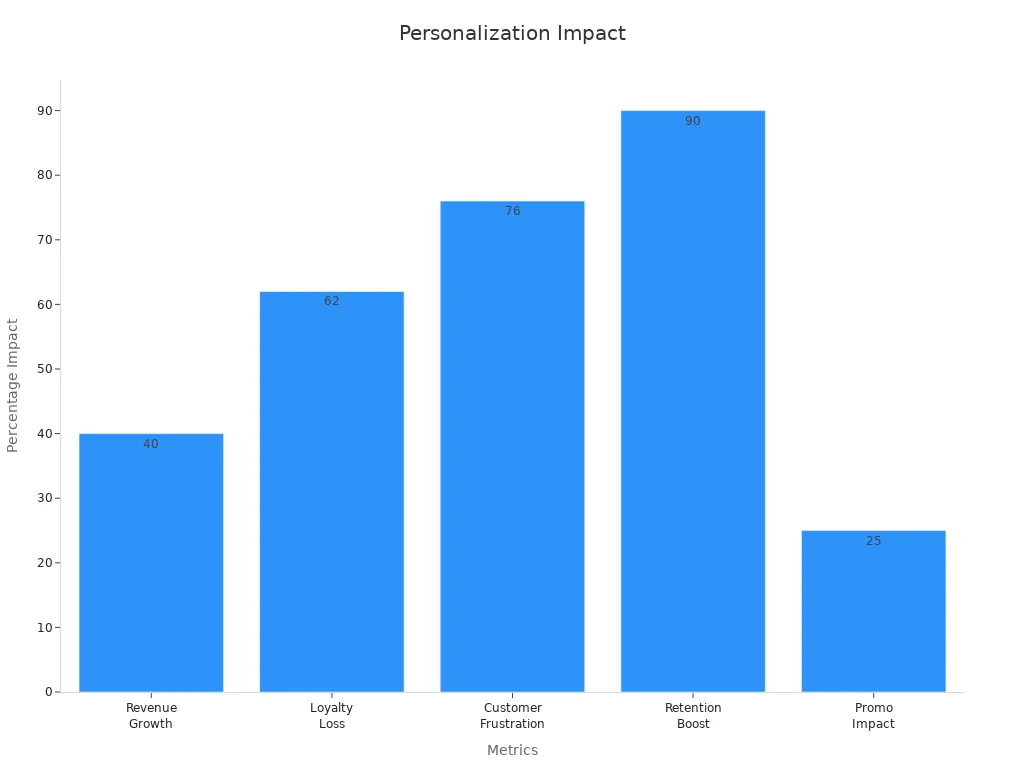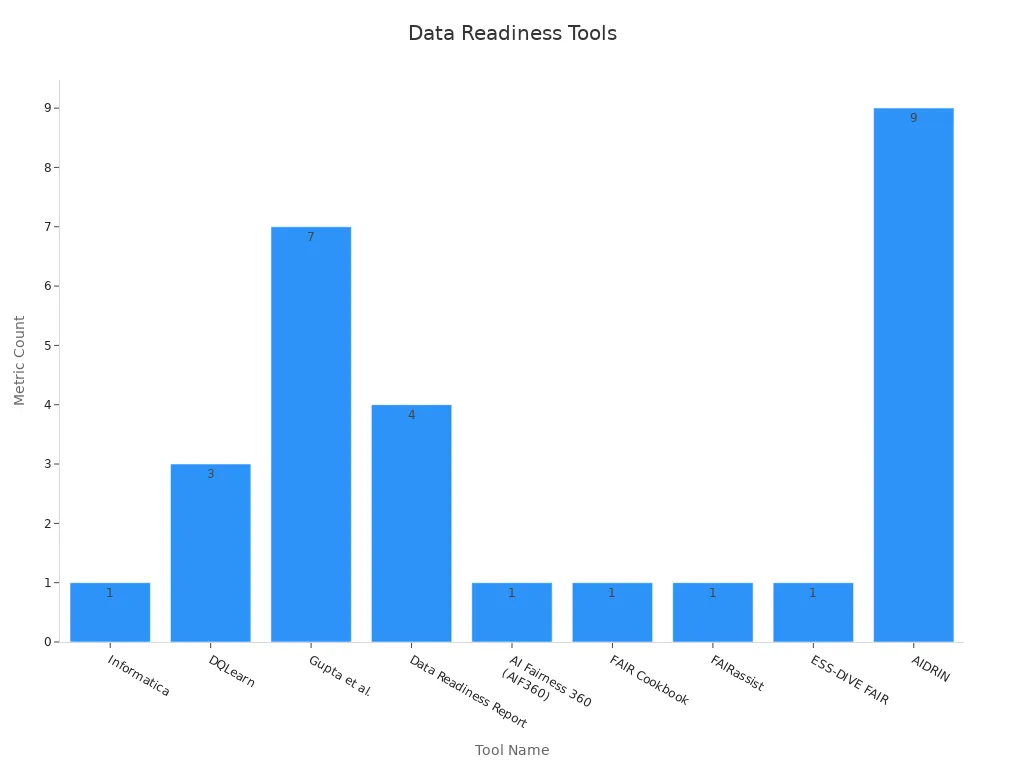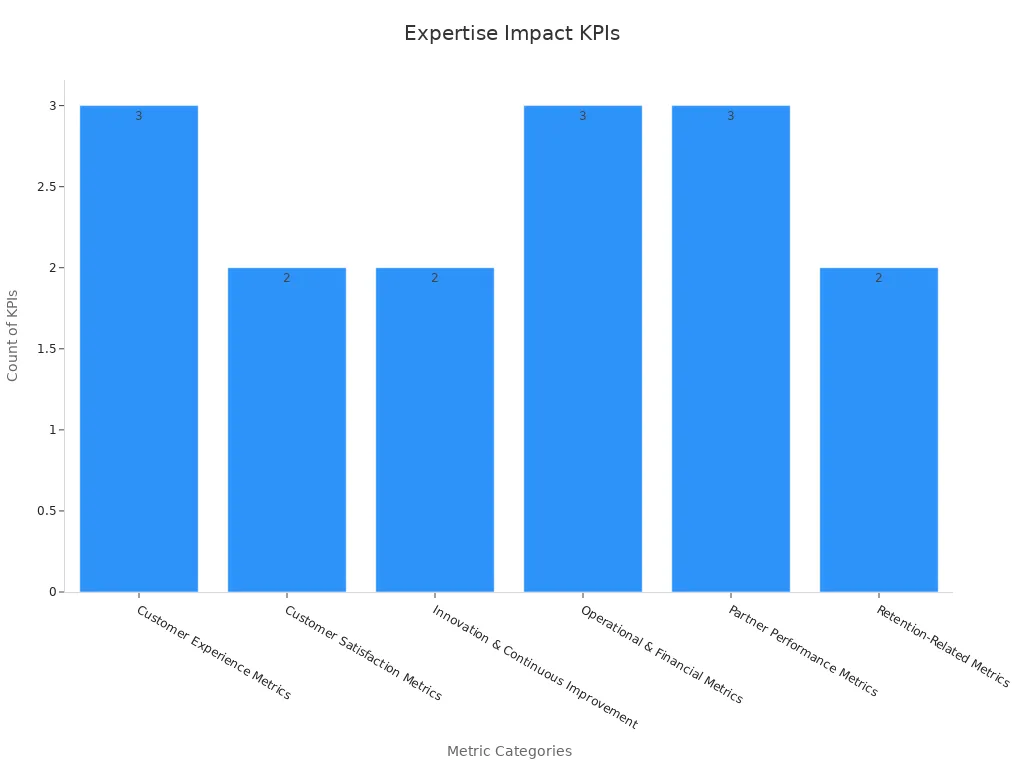What CTOs Miss When Evaluating Personalized Services Capabilities

Many CTOs miss subtle but crucial factors when they evaluate personalized services. Overlooked elements can weaken integration, reduce data quality, and limit ROI. For example, programs that ignore social and economic factors see up to 20% of recovery cases affected, while only 34% of collaborative care programs use personalized planning, despite clear benefits.
Factor / Metric | Statistic / Data Point | Impact / Explanation |
|---|---|---|
Influence of Social Determinants of Health (SDoH) | Non-medical factors like socio-economic status impact recovery outcomes, highlighting overlooked factors. | |
Use of Personalized Care Planning | 34% of collaborative care programs | Indicates underutilization of personalized approaches despite benefits. |
Family Involvement in Care | 16% inclusion rate | Low integration of family support, a critical overlooked factor for better recovery. |
Patient Satisfaction Improvements | 31 out of 64 home care services | Highlights significant positive feedback when personalized care addresses individual needs. |
Ignoring these blind spots can also impact business outcomes. Companies that address gaps in personalization often see up to 60% higher productivity and a 10% uplift in conversion rates, which can drive a 26% increase in revenue. Addressing these areas ensures personalized services deliver both immediate and long-term value.
Key Takeaways
CTOs often miss key factors like data quality, integration complexity, and cross-channel consistency, which can weaken personalized services and reduce business impact.
Ignoring scalability and future-proofing risks system failures as user demand grows, leading to lost sales and costly upgrades.
True personalization goes beyond basic customization by using real-time data and predictive analytics to meet individual customer needs and build loyalty.
Successful personalized services require strong change management, team skills, and alignment with business goals to ensure smooth adoption and lasting value.
Leveraging external expertise and thorough planning improves integration, speeds up projects, and drives higher customer satisfaction and revenue growth.
Standard Evaluation Criteria CTOs Use
Feature Set and Functionality
CTOs often begin by reviewing the features and functions of personalized service platforms. They look for tools that support tailored marketing, customer engagement, and product customization. Companies that personalize marketing—such as sending targeted emails or text messages—build stronger loyalty and stand out from competitors. Customization options, like birthday discounts or loyalty rewards, create unique experiences and reduce product returns. A recent Deloitte survey found that 62% of executives expect more personalized product offerings in the future, showing that customization drives profitable growth.
Personalizing customer interactions with thank-you messages and rewards fosters ongoing relationships.
Live chat and real-time conversations improve satisfaction by making support feel human.
CRM data helps track customer behavior, enabling follow-ups that boost sales success.
Context-based support, where agents know the customer’s history, speeds up problem resolution and prevents churn.
Cost and ROI Projections
Cost and return on investment (ROI) projections play a major role in decision-making. CTOs use statistical models to predict the financial impact of personalized services. Time series models help identify buying trends, which guide marketing plans for better ROI. Clustering models segment customers by behavior, allowing for targeted campaigns that increase returns.
Uplift modeling estimates how much a campaign improves conversion rates and sales.
This approach helps companies focus on high-value customers, improving retention and reducing wasted marketing spend.
For example, one retailer increased sales by 25% and cut marketing costs by 15% using uplift modeling. A financial company reduced churn by 12% and boosted loyalty by 10%.
Vendor Reputation and Support
Vendor reputation and support quality influence the final decision. CTOs use scoring systems, often on a scale from 1 to 5, to rate vendors in key areas:
Category | What It Measures |
|---|---|
Performance | Meets technical specifications |
Delivery | Timeliness of product or service |
Invoicing | Accuracy of pricing and billing |
Customer Service | Responsiveness and problem-solving |
Knowledge | Understanding of the client’s business |
Companies collect these scores through surveys and ongoing tracking. They use ranking systems, such as the Kraljic Matrix, to compare vendors and make evidence-based decisions. This process ensures that the chosen partner can deliver reliable, high-quality personalized services.
Security and Compliance
Security and compliance remain top priorities for CTOs when they evaluate personalized services. Companies must protect sensitive customer data and meet strict regulatory requirements. A strong security posture builds trust with clients and partners.
Many organizations use a range of compliance metrics to measure their security effectiveness:
Vulnerability Patching Rate (Days to Patch): This metric tracks how quickly teams fix security flaws. Fast patching reduces the risk of cyberattacks.
Cybersecurity Awareness Training: Companies measure how many employees complete training, how well they perform on quizzes, and how often they participate. High engagement shows that staff understand security risks and know how to respond.
Number of Cybersecurity Incidents Reported: This number reflects how alert employees are to threats. More reports can mean better awareness and a stronger security culture.
Security Ratings and KPIs: Metrics like Mean Time to Detect (MTTD) and Mean Time to Respond (MTTR) show how quickly teams identify and address security incidents.
Note: Real-time security awareness training metrics help organizations align with frameworks such as HIPAA, SOC 2, and FTC Safeguards. Customizable KPIs and live, auditable metrics support governance and audit readiness.
Security Information and Event Management (SIEM) solutions play a key role. These systems monitor user activity and control access to sensitive data. SIEM tools create detailed audit trails, which help companies comply with regulations like GDPR and SOX. They also enable fast breach detection and notification, which are critical for meeting legal requirements.
CTOs who focus on these metrics and tools can prove compliance confidently. They also reduce the risk of data breaches and build a foundation for secure, personalized services.
What CTOs Miss: Critical Blind Spots

Overlooking Data Quality and Accessibility
Many organizations struggle with data quality and accessibility when building personalized services. Data silos often block teams from sharing and integrating information across departments. Inconsistent data standards, such as different naming conventions or formats, can reduce accuracy and make it hard to trust the data. Legacy systems and outdated technology add more challenges, making it difficult to measure and improve data quality.
Teams also face privacy and security concerns that limit access to important data. The growing volume and variety of data make management even harder. A lack of skilled staff can prevent companies from setting up and maintaining strong data quality metrics.
Key performance indicators help measure these challenges:
Data to Errors Ratio shows how many records have mistakes compared to the total.
Number of Empty Values counts missing or incomplete data fields.
Amount of Dark Data tracks information that is stored but never used.
Data Time-to-Value measures how long it takes for data to become useful.
Data Transformation Errors highlight problems when converting data between formats.
Data Operation Failure Rate shows how often data tasks fail due to quality issues.
Cost of Quality adds up the money spent on collecting, cleaning, and monitoring data.
These indicators cover important areas like accuracy, completeness, consistency, timeliness, validity, and uniqueness. When CTOs Miss these issues, they risk building services on weak foundations. Patient experience surveys also show that many organizations do not spend enough time consulting with users or asking detailed questions. This lack of involvement and expertise makes it harder to improve quality.
Note: Data silos, inconsistent standards, and lack of expertise are common barriers to high-quality, accessible data in personalized services.
Underestimating Integration Complexity
Integration complexity often surprises technology leaders. Many teams expect new personalized services to fit easily with existing systems. In reality, legacy platforms like ERP, CRM, and MES often do not support modern AI or data-driven tools. This mismatch can require large investments and may introduce new security risks.
Metrics that reveal integration challenges include:
Deployment Frequency: How often teams release new code to production.
Lead Time for Changes: The time from making a change to deploying it.
Change Failure Rate: The percentage of releases that cause problems or need fixes.
Time to Restore Service: How quickly teams recover from failures.
Deploying AI-driven personalized services in industrial settings can be especially tough. These projects often need to scale across many sites, handle large data volumes, and manage complex processes. High development costs and long timelines add to the challenge. Research shows that missing critical blind spots, such as balancing budgets between customer acquisition and retention, can hurt ROI. For example, startups with balanced growth see a 30% higher retention rate and a 15% lower acquisition cost. Studies also show that 40% to 60% of digital marketing budgets go to waste because of blind spots in integration and strategy.
A few case studies highlight the impact:
Case Study | Industry | Key Blind Spot Addressed | Impact on Integration and ROI |
|---|---|---|---|
Reformation | Fashion | Data-backed decision making | Improved marketing integration and ROI |
WorkSimpli | SaaS | Addressed data blind spots | Saved over 10 hours weekly, better efficiency and ROI |
PandaDoc | SaaS | Linked marketing and revenue | Enhanced integration, improved ROI |
When CTOs Miss the true complexity of integration, projects can face delays, higher costs, and poor results.
Ignoring Cross-Channel Consistency
Cross-channel consistency means giving customers the same experience no matter how they interact with a company. Many organizations fail to recognize customers across different channels, such as mobile, desktop, email, and in-store visits. This inconsistency can frustrate users and reduce trust.
Salesforce research found that customers are 3.5 times more likely to buy when recognized across channels. Average order values rise by 13% when messaging adapts to previous interactions. McKinsey reports that companies with strong omnichannel personalization can boost revenue by 5 to 15 percent.
Problems from inconsistency include:
Different experiences on mobile and desktop.
Varied promotions on different brand domains.
Campaigns that do not match across social media, email, print, and stores.
Repeated requests for the same information.
Without accurate user identification, brands cannot ensure a smooth journey for customers. This leads to lower conversion rates and higher churn. Inconsistent experiences can also damage a company’s reputation and reduce long-term revenue.
Tip: Consistent cross-channel experiences increase customer satisfaction, trust, and business growth.
Neglecting Scalability and Future-Proofing
Many technology leaders focus on immediate needs when they select personalized service platforms. They often overlook how these solutions will handle growth or adapt to future changes. Scalability means the system can support more users, data, or features without slowing down or breaking. Future-proofing ensures the platform can adjust to new technologies, regulations, or business models.
A system that cannot scale will struggle as the company grows. For example, a personalized recommendation engine may work well for 10,000 users but fail when the user base reaches 1 million. This failure can lead to slow response times, lost sales, and unhappy customers. Companies that ignore future-proofing may face expensive upgrades or even need to replace their systems.
Key questions to consider include:
Can the platform handle a sudden increase in users or data?
Does the system support new integrations or emerging technologies?
How easy is it to update or expand the platform?
Tip: Teams should test platforms under heavy loads before making a final decision. They should also review the vendor’s roadmap for updates and support.
A scalable and future-proof solution protects the company’s investment. It allows the business to grow and change without major disruptions. CTOs Miss this critical step when they focus only on current requirements.
Confusing Personalization Depth with Superficial Customization
Some organizations believe they offer true personalization when they only provide basic customization. Superficial customization includes simple changes like using a customer’s name in an email or offering generic product recommendations. Deep personalization uses data to understand each customer’s preferences, behaviors, and needs.
Deep personalization requires advanced analytics, machine learning, and real-time data processing. It can suggest products based on browsing history, predict future needs, and adapt messages to each user’s journey. Superficial customization cannot deliver these results.
A comparison table highlights the difference:
Feature | Superficial Customization | Deep Personalization |
|---|---|---|
Uses customer’s name | ✅ | ✅ |
Generic product suggestions | ✅ | |
Real-time behavior analysis | ✅ | |
Predictive recommendations | ✅ | |
Adapts to user journey | ✅ | |
Context-aware messaging | ✅ |
Companies that confuse these two approaches risk disappointing customers. Users expect brands to understand their needs, not just recognize their names. Deep personalization builds loyalty and increases sales. Superficial efforts can feel impersonal and may even drive customers away.
Note: Teams should audit their personalization strategies to ensure they go beyond surface-level customization.
Failing to Assess Change Management and Internal Adoption
Technology alone cannot guarantee success. Teams must also manage how people adapt to new personalized service platforms. Change management involves preparing staff, setting clear goals, and supporting users as they learn new tools.
Many projects fail because employees do not understand the benefits or feel overwhelmed by new processes. Without proper training and communication, staff may resist using the new system. This resistance can slow down adoption and reduce the return on investment.
Key steps for successful change management:
Communicate the reasons for change and expected benefits.
Provide hands-on training and ongoing support.
Involve employees in the planning and rollout process.
Set measurable goals and track progress.
Alert: Ignoring change management can lead to low adoption rates, wasted resources, and missed business goals.
Companies that invest in change management see higher employee engagement and faster adoption. They also achieve better results from their personalized service initiatives.
Missing Strategic Alignment with Business Goals
Many technology leaders focus on technical features and costs. They sometimes forget to check if new personalized services match the company’s main goals. When teams do not align technology with business strategy, projects can drift away from what matters most. This misalignment can lead to wasted resources and missed opportunities.
A company might want to improve customer loyalty, but the chosen platform only supports basic marketing. Another business may aim for global expansion, but the service cannot handle multiple languages or regions. These gaps show why strategic alignment matters.
Tip: Teams should map every technology decision to a clear business goal. This step helps everyone see the value and stay focused.
A simple checklist can help:
Does the service support the company’s growth plans?
Will it help meet customer satisfaction targets?
Can it adapt to new business models or markets?
Does it fit with the company’s brand and values?
When CTOs Miss this alignment, even the best technology can fail to deliver results. Teams should review business goals before making any final decisions.
Overlooking Team Skills and Capability Gaps
Personalized services need more than just new software. Teams must have the right skills to use, manage, and improve these tools. Many organizations do not check if their staff can handle new systems. This oversight can slow down projects and lower the return on investment.
Some teams lack experience with data analytics, machine learning, or customer journey mapping. Others may not know how to use new dashboards or reporting tools. Training and hiring plans can fill these gaps, but only if leaders spot them early.
A table can help identify skill gaps:
Skill Area | Current Level | Needed Level | Gap Exists? |
|---|---|---|---|
Data Analytics | Medium | High | Yes |
Machine Learning | Low | Medium | Yes |
Customer Experience | High | High | No |
Integration Skills | Medium | High | Yes |
Note: Regular skills assessments help teams stay ready for new challenges.
Leaders should invest in training, workshops, and outside experts when needed. This approach builds confidence and speeds up adoption.
Focusing Too Narrowly on Technology Selection
Some organizations spend most of their time comparing software features and prices. They forget to look at the bigger picture. Technology is only one part of a successful personalized service. Teams must also consider processes, people, and long-term goals.
A narrow focus can cause problems:
Teams may pick a tool that does not fit with other systems.
They might ignore how the change will affect daily work.
They could miss hidden costs, like extra support or upgrades.
Alert: Choosing technology without a full plan can lead to delays, extra costs, and poor results.
A better approach includes:
Reviewing how the new service fits with current workflows.
Checking if the vendor offers strong support and training.
Planning for future updates and changes.
Involving staff from different departments in the decision.
When teams look beyond just the technology, they build stronger, more flexible solutions.
Underestimating AI-Driven Personalization Challenges
AI-driven personalization can transform customer experiences. Companies in hospitality, retail, and entertainment use AI to tailor services, boost loyalty, and increase revenue. For example, Netflix’s recommendation engine saves the company about $1 billion each year by reducing subscriber cancellations. Starbucks uses AI to personalize rewards, which increases customer loyalty and repeat purchases. Marketers report a 25% increase in marketing ROI, and companies see up to 40% more revenue from personalization efforts.
Despite these benefits, AI-driven personalization brings real challenges. Many customers worry about privacy and data security. They may avoid sharing personal information if they do not trust a company’s data practices. This fear limits the data available for AI models, making personalization less effective. In the hospitality sector, privacy concerns often stop customers from using personalized services, even when these services could improve their experience.
AI personalization depends on high-quality, first-party data and strong data management systems. Companies must secure customer consent, anonymize data, and follow privacy laws like GDPR and CCPA. Brands that fail to address these issues risk losing customer trust and facing legal trouble. Balancing the benefits of AI personalization with transparent data practices is critical for long-term success.
Benefit Category | Impact Example |
|---|---|
Higher ROI | Marketers see a 25% increase in ROI; 72% of ad executives report better campaign results. |
Revenue Uplift | AI personalization drives a 20% sales increase; Amazon earns 35% of revenue from AI recommendations. |
Stronger Engagement | Customer engagement rates double; personalized emails lead to 6× more transactions. |
Conversion & Retention | Conversion rates rise by 1.7×; churn drops by 28%. |
Customer Satisfaction | Satisfaction scores climb by 30%; 78% of consumers are more likely to repurchase. |
Cost Efficiency | Customer acquisition costs drop by up to 50%; marketing costs fall by 37% with AI automation. |
Tip: Companies should build trust by being open about how they use data and by following all privacy rules.
Ignoring Interoperability, Security, and Data Analytics
Interoperability, security, and data analytics form the backbone of successful personalized services. Many organizations struggle with legacy systems, poor data quality, and a lack of industry standards. These issues make it hard to share data across platforms and departments. Security and privacy concerns add another layer of complexity, especially in industries like healthcare.
Life sciences and healthcare organizations rely on data integration to break down silos and provide complete access to information. Standards such as HL7 and FHIR help systems exchange data smoothly. Cloud-based platforms and APIs support real-time integration and scalability. Master Data Management frameworks keep data accurate and consistent, which is vital for analytics and regulatory compliance.
A few organizations show how strong integration leads to better outcomes:
Organization | Metrics / Results | Integration Aspect(s) |
|---|---|---|
Johns Hopkins | Patient satisfaction rates 20% higher than national averages | Personalized care using data analytics |
Intermountain Healthcare | 21% fewer heart failure readmissions; $30 million saved annually | Clinical, financial, and operational data integration |
MSOs (General) | Centralized data improves analysis, patient convenience, and health outcomes | Data integration, analytics, security compliance |
Healthcare Systems | Compliance with HIPAA, FHIR, HL7; secure data exchange | Security, interoperability, regulatory compliance |
Best practices for integration include:
Assessing current systems and data flows.
Developing a clear roadmap for interoperability.
Adopting industry data standards and API-driven integration.
Building strong data governance and fostering collaboration.
Note: Data interoperability enables seamless data exchange and supports AI and machine learning by providing diverse, high-quality datasets.
CTOs Miss the importance of these foundational elements when they focus only on features or costs. Without strong interoperability, security, and analytics, personalized services cannot deliver their full value.
Missing Opportunities for External Expertise
Many organizations try to manage personalized services projects with only internal resources. This approach can limit innovation and slow progress. External experts bring fresh perspectives, specialized skills, and experience from other industries. They can help identify blind spots, recommend best practices, and speed up implementation.
External consultants often have deep knowledge of data integration, AI, and regulatory compliance. They can guide teams through complex challenges, such as migrating legacy systems or setting up advanced analytics. By working with outside experts, companies can avoid common mistakes and adopt proven solutions faster.
A few ways external expertise adds value:
Identifying gaps in team skills and recommending targeted training.
Advising on the latest technology trends and tools.
Helping with change management and user adoption.
Ensuring compliance with privacy and security regulations.
Callout: Bringing in external expertise can save time, reduce costs, and improve project outcomes.
Organizations that use outside help often see faster results and higher ROI. They also build stronger, more flexible personalized services that can adapt to future needs.
Real-World Consequences When CTOs Miss Key Factors

Integration Failures and Project Delays
Integration failures often lead to significant project delays and lost business value. Teams experience uneven workloads, which increases burnout and causes more production incidents. When technical disagreements do not happen often, delivery slows by nearly a quarter. High context switching reduces the ability to predict project timelines by over a third. Teams that track these issues meet their delivery targets much more consistently.
Project managers see delays when teams wait for deliverables, data, or infrastructure. Skilled personnel shortages and contractor delays create bottlenecks. Scope changes and integration defects push back service rollouts. Data quality problems, such as incomplete or duplicated records, further complicate integration. Without strong contingency plans, downtime increases and restoring services takes longer.
Tip: Regular testing, clear restoration processes, and data integrity checkpoints help reduce costly delays.
Data Silos Undermining Personalization
Data silos block the flow of information between departments. Teams cannot access complete customer or patient profiles, which weakens personalization. Poor data quality and lack of governance cause errors and slowdowns. Incomplete or duplicated data leads to integration mistakes and missed opportunities.
Patients feel anxious and dissatisfied when they see different doctors without explanation. They describe complex, uncoordinated systems as overwhelming, especially during important moments like receiving test results. Inflexible routines that ignore individual needs create negative experiences, particularly for vulnerable groups such as dementia patients.
Teams struggle to deliver tailored services when they cannot share or trust data.
Customers in hospitality have different expectations and needs. A one-size-fits-all approach often leads to dissatisfaction or lost revenue.
Six unique customer types exist, each with their own preferences. Ignoring these differences results in missed value and poor pricing strategies.
Inconsistent User Experiences Across Channels
Inconsistent experiences across channels frustrate users and damage trust. Customers expect the same level of service whether they interact online, in person, or through mobile apps. When companies fail to recognize users across channels, satisfaction drops and conversion rates fall.
Patients benefit when teams of specialists work together and provide continuity of care. They feel known and understood, which leads to better outcomes. In contrast, poorly coordinated systems confuse users and make navigation difficult. Customers who receive mixed messages or repeated requests for information lose confidence in the brand.
Consistent, seamless experiences across all touchpoints build loyalty and drive long-term growth. Companies that prioritize cross-channel consistency see higher satisfaction and stronger business results.
Missed Opportunities for Long-Term Growth
Many companies miss out on long-term growth when they fail to deliver true personalization. Customers expect brands to understand their needs and offer relevant experiences. When companies do not meet these expectations, they lose trust and loyalty. Fast-growing companies generate 40% more revenue from personalization than slower competitors. This shows that personalization is not just a trend but a key driver of business success.
A lack of personalization leads to customer frustration. In fact, 76% of customers feel upset when they do not receive personalized experiences. Over 60% of consumers say they will stop buying from brands that do not personalize. This loss of loyalty can hurt a company’s stability and future growth.
The following table highlights the strong link between personalization and business performance:
Statistic Description | Growth Impact / Correlation |
|---|---|
Fast-growing companies generate 40% more revenue from personalization than slower-growing competitors | Companies that use personalization grow faster and earn more revenue |
62% of consumers say brands lose their loyalty if they provide un-personalized experiences | Missed personalization leads to lost loyalty and weaker business stability |
76% of customers express frustration when they don’t receive personalized experiences | Customer dissatisfaction rises, harming retention and growth |
Businesses excelling at personalization see a 90% increase in retention rates | Personalization drives customer retention, supporting long-term growth |
Personalized promotions lead to 25%+ revenue growth | Targeted offers directly boost revenue |

Personalized offers also drive sales. Over 90% of consumers prefer shopping with brands that provide relevant deals. Companies that excel at personalization see up to a 90% increase in retention rates and more than 25% revenue growth from targeted promotions. Missing these opportunities means leaving significant growth on the table.
Increased Technical Debt and Reduced Agility
When CTOs ignore integration, data quality, or scalability, technical debt grows quickly. Technical debt happens when teams take shortcuts or delay important updates. Over time, these shortcuts make systems harder to change and maintain. Teams spend more time fixing problems and less time building new features.
Reduced agility follows as technical debt increases. Companies cannot respond quickly to market changes or customer needs. New projects take longer because teams must work around old code and outdated systems. This slows innovation and makes it harder to compete.
Common signs of technical debt include:
Frequent system outages or slowdowns
High maintenance costs
Difficulty adding new features
Long onboarding times for new team members
Teams that address technical debt early stay flexible and ready for growth. They can launch new personalized services faster and adapt to changing business needs. Ignoring these issues puts long-term success at risk.
Actionable Steps to Address What CTOs Miss
Conducting a Data Readiness Assessment
Organizations must evaluate their data before launching personalized services. Data readiness tools help teams measure completeness, spot outliers, and identify duplicates. Tools like AIDRIN stand out because they assess not only data quality but also privacy, fairness, and compliance. AIDRIN provides a single framework for scoring and visualizing key metrics such as feature relevancy and class imbalance. This approach supports ethical and effective personalization.
Tool | Completeness | Outliers | Duplicates | Privacy | Fairness | FAIR Compliance | Feature Correlations | Feature Relevancy | Class Imbalance |
|---|---|---|---|---|---|---|---|---|---|
Informatica | ✓ | N/A | N/A | N/A | N/A | N/A | N/A | N/A | N/A |
DQLearn | ✓ | ✓ | ✓ | N/A | N/A | N/A | N/A | N/A | N/A |
Gupta et al. | ✓ | ✓ | ✓ | N/A | ✓ | N/A | ✓ | ✓ | ✓ |
Data Readiness Report | ✓ | ✓ | N/A | N/A | N/A | ✓ | ✓ | N/A | N/A |
AIDRIN | ✓ | ✓ | ✓ | ✓ | ✓ | ✓ | ✓ | ✓ | ✓ |

Tip: Teams that use comprehensive data readiness tools reduce errors and improve the accuracy of personalized services.
Prioritizing Seamless Integration Planning
Effective integration planning ensures new personalized services work smoothly with existing systems. Proven frameworks such as the Implementation Outcomes Framework and the EPIS Model guide teams through each phase. These models emphasize stakeholder engagement, context sensitivity, and sustainability. Teams that use structured methodologies achieve better integration and long-term success.
Framework | Key Features Supporting Integration |
|---|---|
Implementation Outcomes Framework | Focuses on penetration, fidelity, sustainability, and stakeholder engagement |
RE-AIM | Addresses reach, adoption, fidelity, and maintenance |
Dynamic Adaptation Process | Supports data-informed adaptation and collaboration |
EPIS Model | Uses phased approach for context and sustainability |
Teams that follow these frameworks see fewer integration failures and faster adoption of personalized services.
Ensuring Omnichannel Experience Alignment
Customers expect a consistent experience across all channels. Companies that align their messaging and personalization see dramatic improvements in engagement. Data-driven personalization increases open rates by 23%, clickthrough rates by 81.5%, and conversions by 133%. Revenue per email rises by 142%, while unsubscribe rates drop by 43.5%.
Metric | Improvement with Personalization |
|---|---|
Open rates | +23% |
Clickthrough rates | +81.5% |
Conversions | +133% |
Unsubscribes | -43.5% |
Revenue per email | +142% |

Consistent omnichannel personalization builds trust, increases loyalty, and drives higher revenue.
Building for Scalability from Day One
Scalability forms the backbone of any successful personalized service. Teams must plan for growth from the start. A scalable system handles more users, larger data sets, and new features without slowing down. Early planning prevents costly upgrades and disruptions later.
Key steps for building scalability include:
Choosing cloud-native platforms that expand resources automatically.
Using modular architecture so teams can add or update features easily.
Testing systems under heavy loads to spot weaknesses before launch.
Setting clear performance benchmarks for response times and uptime.
Tip: Teams that prioritize scalability avoid bottlenecks and deliver smooth experiences as demand grows.
A scalable foundation supports future innovations. It allows companies to respond quickly to market changes and customer needs. This approach protects investments and ensures long-term success.
Fostering Cross-Functional Collaboration
Personalized services require teamwork across departments. Marketing, IT, operations, and customer support must work together. Cross-functional collaboration breaks down silos and improves problem-solving.
Teams can foster collaboration by:
Holding regular meetings with members from different departments.
Sharing project goals and progress through dashboards.
Encouraging open feedback and knowledge sharing.
Assigning clear roles and responsibilities.
Strong internal communication creates shared understanding. Employees who know the company’s goals work better together. They deliver more consistent and customer-focused services.
Open communication and teamwork help companies adapt quickly and solve challenges faster.
Aligning Technology with Business Strategy
Technology choices must match business goals. When teams align technology with strategy, they maximize the impact of every investment. Enterprise Architecture (EA) provides a framework for this alignment. EA maps technology projects to business outcomes, such as better patient results or higher efficiency.
Internal communications play a key role. They keep employees informed and engaged. Engaged teams understand company objectives and deliver better personalized services.
Many organizations use OKRs (Objectives and Key Results) to align efforts:
Define clear objectives that match the company’s vision.
Break these objectives into team and individual goals.
Review progress regularly and adjust as needed.
Share performance metrics openly.
This structured approach ensures everyone works toward the same goals. It supports personalized service by keeping teams focused on customer needs and business priorities.
Leveraging External Expertise and Fractional CTO Services
Many organizations face challenges when building personalized services. External experts and fractional CTOs provide valuable support. They bring specialized skills, industry knowledge, and a fresh perspective. These professionals help companies avoid common mistakes and speed up project timelines.
External expertise improves user engagement and business outcomes. Teams see higher numbers of active users and more frequent interactions. Conversion rates rise as more users complete desired actions. Customer satisfaction also improves. Surveys and feedback show that customers notice better service and feel more valued.
Fractional CTOs offer leadership without the cost of a full-time executive. They guide technology strategy and ensure alignment with business goals. These experts help teams adopt best practices and manage complex integrations. They also support change management and staff training.
Organizations measure the impact of external expertise using clear metrics:
Example Metrics / KPIs | Purpose / What it Validates | |
|---|---|---|
User Engagement | Number of Active Users, Time Spent, Interaction Frequency | Measures user involvement and interest driven by external expertise |
Conversion Rates | Percentage of users completing desired actions | Validates effectiveness in driving personalized outcomes |
Customer Satisfaction | Surveys, Feedback, Customer Reviews | Assesses customer sentiment and experience improvements |
Return on Investment (ROI) | Revenue generated vs. costs | Measures financial effectiveness of external partnerships |
Partner Performance | Sales by Partners, Customer Acquisition Rates, Partner Satisfaction | Evaluates partner contribution to personalized service success |
Customer loyalty and satisfaction also increase. Net Promoter Score (NPS) and Customer Satisfaction Score (CSAT) provide insight into these improvements. Operational metrics, such as response time and order fulfillment, show gains in efficiency.
Metric | Description | Purpose / What it Validates |
|---|---|---|
Net Promoter Score (NPS) | Measures likelihood of customers recommending the service/product | Indicates customer loyalty and satisfaction influenced by personalization |
Customer Satisfaction Score (CSAT) | Measures satisfaction with specific aspects of the service/product | Validates how well personalized services meet customer needs |
Innovation grows with external input. Teams launch more process improvements and successful initiatives. Financial metrics, such as profit margin and time-to-market, reflect these gains. Retention metrics, like churn rate and customer lifetime value, show long-term benefits.

Bringing in external expertise and fractional CTOs helps organizations deliver better personalized services, drive innovation, and achieve measurable business results.
CTOs Miss: Evaluation Checklist for Personalized Services Capabilities
Data Quality and Integration Questions
High-quality data forms the backbone of effective personalized services. Teams should ask targeted questions to assess data readiness and integration:
Are all required data fields complete and free from missing values?
Do data formats and structures remain consistent across systems?
How accurate are the data entries compared to real-world values?
Can teams trace data changes and access history?
Does the data meet user needs and support business goals?
Are unique identifiers in place to link records and maintain referential integrity?
A structured approach helps teams evaluate these areas. The following table summarizes key criteria:
Criteria | Description | Target Value |
|---|---|---|
Completeness | No missing values in required fields | |
Consistency | Uniform formats and rules across systems | >97% |
Accuracy | Data matches real-world values | |
Traceability | Ability to track changes and access | Full audit trail |
Integrability | Data definitions support integration | Standardized |
Uniqueness | Low duplicate record rates | <1% duplicates |
Timeliness | Data available when needed | Meets business needs |
Teams that monitor these metrics reduce errors and improve integration success.
Scalability and Future Needs Assessment
Scalability ensures that personalized services can grow with the business. Teams should review technical architecture, performance, and resource allocation. Key questions include:
Does the system use modular design, such as microservices, for easy scaling?
How does the platform perform under heavy loads or peak usage?
What strategies exist for allocating resources as demand increases?
Are scalability metrics embedded in operational monitoring?
A table of benchmarks provides a clear overview:
Benchmark Category | Example Focus Areas |
|---|---|
Technical Architecture | Microservices, load distribution |
Performance Criteria | Response time, throughput, error rates |
User Demand Forecasting | Peak usage trends, user segmentation |
Resource Allocation | Cloud scaling, load balancing |
Engagement Metrics | Load time, conversion rates, feedback mechanisms |
Regular reviews of these benchmarks help teams prepare for future growth and avoid costly upgrades.
User Experience Consistency Review
Consistent user experiences build trust and satisfaction. Teams should evaluate:
Do customers receive the same level of service across all channels?
Are personalized messages and offers aligned in email, web, and mobile?
How quickly do support teams respond to customer needs?
Do users find it easy to complete actions with minimal effort?
Key metrics for user experience include:
Metric Name | Measurement Focus |
|---|---|
Ease of completing actions | |
Net Promoter Score (NPS) | Likelihood to recommend the service |
Customer Satisfaction (CSAT) | Direct feedback on satisfaction |
First Response Time (FRT) | Speed of initial support response |
Average Resolution Time (ART) | Time to resolve issues |
Consistent, personalized experiences across channels increase loyalty and drive higher retention rates.
Change Management and Team Capability Planning
Change management and team capability planning play a vital role in the success of personalized service initiatives. Teams that plan for change and build strong capabilities adapt more quickly and deliver better results. The PROSPER study shows that teams with high functioning in early project phases create better plans for sustainability. These teams also secure funding and maintain expertise over time. The Interagency Collaborative Team (ICT) model highlights how structured leadership and collaboration across agencies support long-term success. Regular meetings, clear leadership roles, and ongoing coaching help teams stay aligned and focused.
Multidisciplinary teams in cancer care provide another example. These teams include specialists from different fields who meet regularly to coordinate care. The UK Department of Health requires these meetings to ensure every patient receives consistent and high-quality care. Leadership, strong team processes, and well-organized meetings improve decision-making and service delivery. When teams invest in capability planning, they deliver more reliable and effective personalized services.
Teams that focus on structured planning, leadership, and collaboration see higher success rates and better outcomes for customers.
Strategic Alignment and External Support Considerations
Strategic alignment ensures that personalized service projects support the company’s main goals. Successful organizations connect strategic KPIs, such as Net Promoter Score (NPS) and Time to Market, with operational measures like Average Resolution Time and Customer Satisfaction Score. This approach balances objectives at every level, from individuals to departments. Clear communication, regular meetings, and a strong performance management system help teams stay on track. When KPIs are SMART and cascaded across the organization, teams see improved customer satisfaction, faster innovation, and increased market share.
Key performance indicators for strategic alignment include:
Project success rate and schedule performance
Budget variance and resource utilization
Process compliance and stakeholder satisfaction
External support also plays a key role. Outside experts bring fresh ideas and specialized skills. They help teams identify gaps, adopt best practices, and manage complex projects. By leveraging external support, organizations improve project outcomes and adapt more quickly to change.
Aligning strategy and seeking external expertise drive better results and ensure personalized services deliver lasting value.
Many organizations overlook key factors when evaluating personalized services, which can lead to missed growth and customer dissatisfaction. A forward-thinking approach includes regular self-evaluation, setting SMART goals, and tracking progress with clear benchmarks such as customer satisfaction scores, average resolution times, and peer reviews.
Teams that use both quantitative data and customer feedback see steady improvement in service quality and business outcomes.
By focusing on these steps, leaders ensure personalized services deliver lasting value and support long-term success.
FAQ
What is the biggest risk when CTOs overlook data quality?
Poor data quality leads to inaccurate personalization. Teams may deliver irrelevant content or offers. Customers lose trust quickly. Companies see lower engagement and higher churn rates.
How can organizations ensure cross-channel consistency?
Teams should use unified customer profiles and centralized data platforms. Regular audits and feedback help maintain consistent messaging. Omnichannel strategies align all touchpoints for a seamless experience.
Why does scalability matter for personalized services?
Scalability allows systems to handle more users and data as the business grows. Without it, performance drops. Customers experience slow service. Companies face expensive upgrades and missed opportunities.
When should external expertise be considered?
External experts help when teams lack specialized skills or face complex integrations. They provide best practices, speed up projects, and reduce costly mistakes. Companies benefit from fresh perspectives and proven solutions.
See Also
Leveraging Consumer Insights To Drive Effective Business Actions
Creating Unified Customer Profiles Across Digital And Physical Channels
Developing Personalized WeChat Mini-Programs For Individual Services
How Artificial Intelligence Is Revolutionizing Retail Shopping Today
Integrating Artificial Intelligence Into Business Growth Planning

